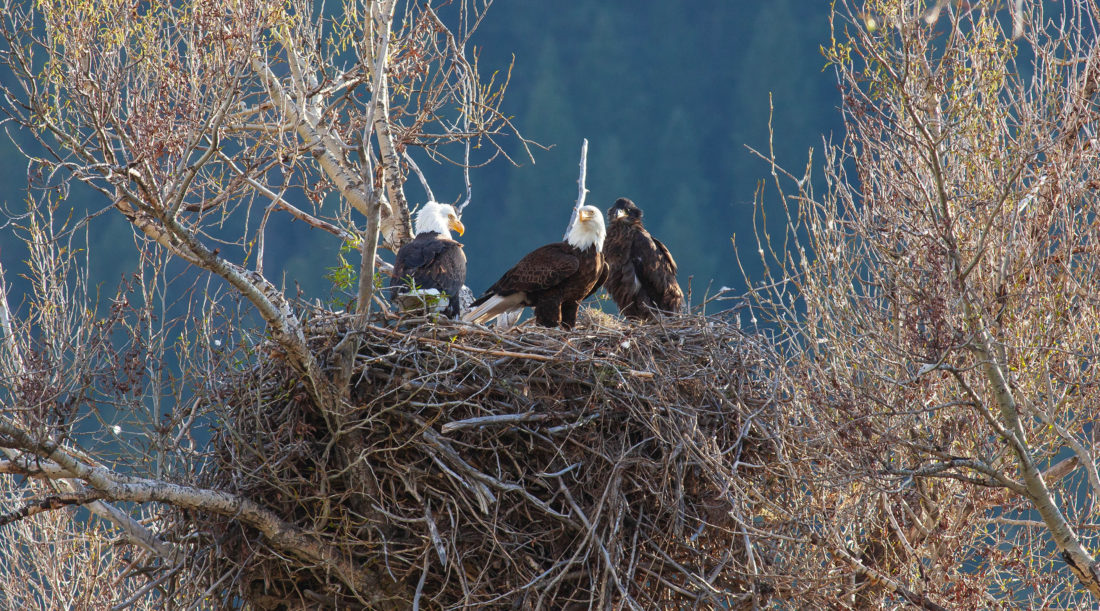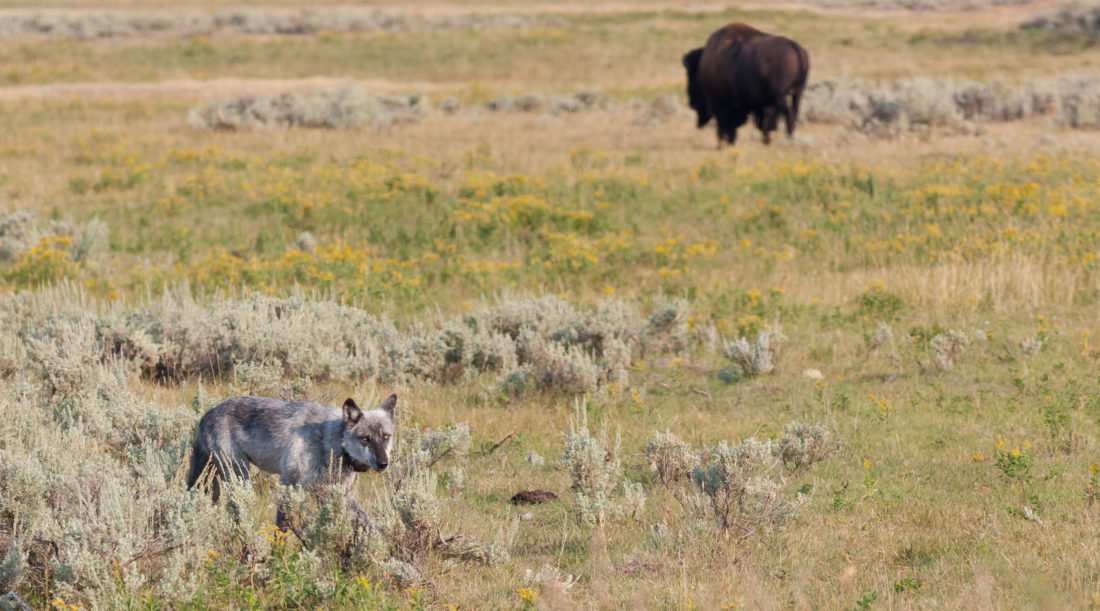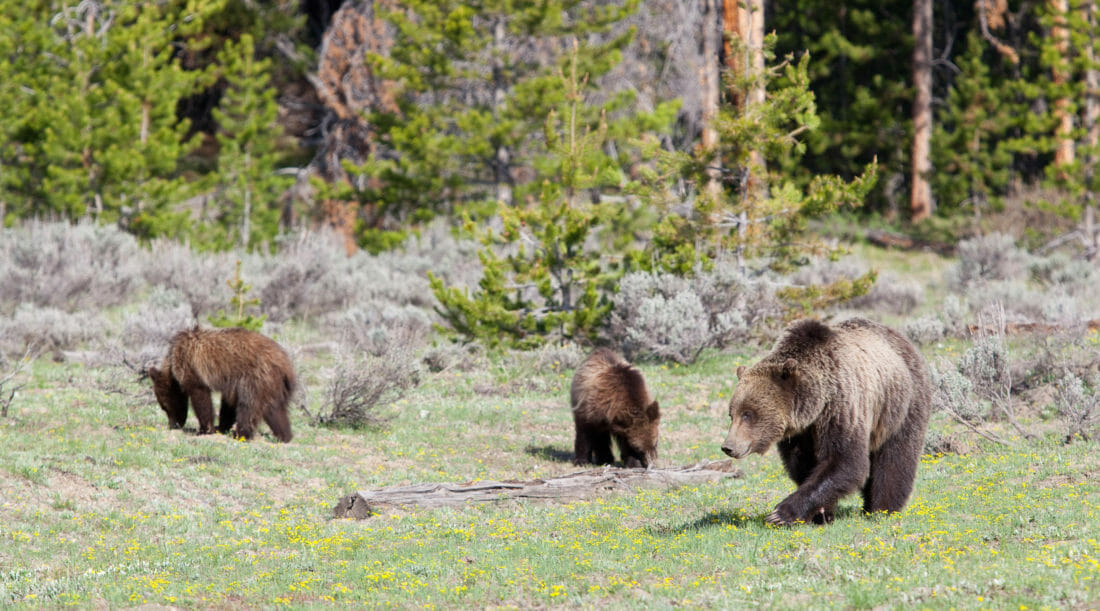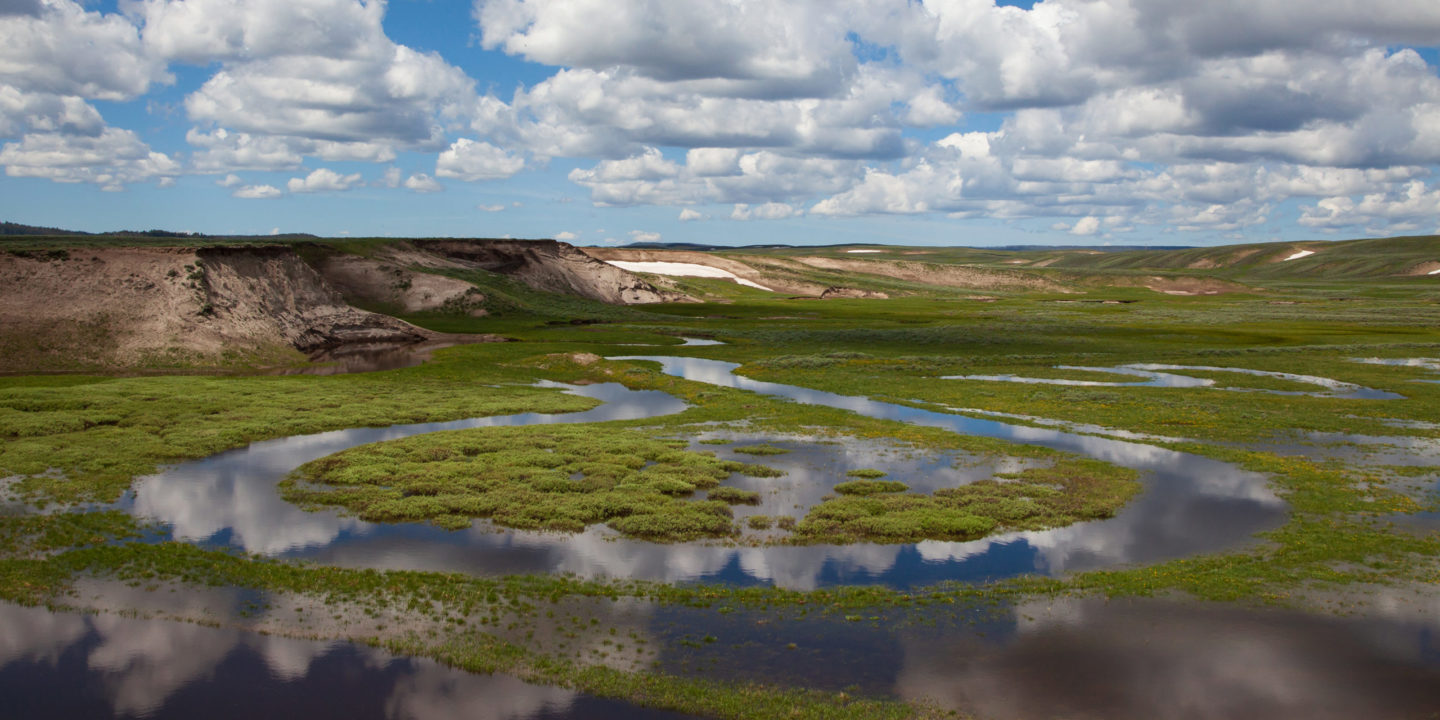Hayden Valley
The Lamar Valley gets a lot of credit for being the ideal area to find and observe wildlife in Yellowstone National Park. In reality it is an expansive valley of about 29 miles, and it has been the site of many important wildlife conservation and restoration projects. However, the Lamar Valley is only one of many valleys within the park. The Hayden Valley, which you could potentially consider the “mini version” of Lamar at only 7 miles in length, is another grassland area that can be prosperous for wildlife spotting. The Yellowstone River flows through this valley, which is one of the longest un-dammed rivers left within the continental United States at 671 miles in total length. Once again, this is prime habitat to seek bald eagles which both hunt and nest along its river banks.

Bison
The Hayden Valley in summer will also house a large portion of the southern herd of bison in Yellowstone. This can be a spectacular area to drive through in August when the bison are in rut. These large mammals will cover the roadways, making what might normally be a 10-15 minute drive last an hour, as you carefully navigate herds of female bison being pursued by one ton bulls letting loose bellowing, guttural roars you might not expect to hear from such a bovine-like animal.
Elk
Ample grassland habitat also means this can be yet another ideal area to find elk, once again dawn and dusk are the best times to seek out this animal in summer. With elk, once again comes the prospect of finding wolves. Unique to the Hayden Valley is the Wapiti Lake Pack, which believe it or not is the current largest pack of wolves in Yellowstone! One of the most recent population surveys in 2020 revealed an incredible 19 members, with the alpha female being quite distinguishable because she is white in color. Just imagine scanning the landscape with the hopes of seeing at least one wolf, and to potentially have a pack of nearly 20 appear actively hunting or perhaps already feasting on a prey animal.

Grizzly Bear
Grizzly bears can also be found in the Hayden Valley, and similar to the Lamar Valley is it best to look for them in early summer and again as temperatures cool for the arrival of fall. Not too long ago, some lucky visitors to Yellowstone National Park were actually able to witness a large boar grizzly bear, (he was estimated to be nearly 700lbs), successfully hunt a full grown bull elk no more than a quarter mile from the roadway. This is a very rare sight to behold, it is not often grizzlies are seen chasing down such large, powerful prey. On this occasion it is believed this elk had already sustained injuries, potentially from another competing elk since September is when the rut begins for this species.
Those who witnessed and recorded the event captured the bull elk bounding into the Yellowstone River, a common move when trying to escape hunting wolves, but the grizzly bear did not even hesitate at the river’s edge. He leaped in after the elk, latching powerful jaws to the back of its neck where the bear could bite down with enough force to crush the spine and paralyze his prey. What followed was the grizzly barrel rolling the elk in the river till it no longer fought back. For nearly a week this massive carnivore feasted on the elk, going as far to partially bury and sleep on top of the carcass to keep other bears and even wolves from getting to it. An event like this may only occur once per season in the Hayden Valley, but it’s a blessing when it does. A carcass may not sound like an exciting find, but typically it will attract some of the most exciting carnivores to the area!

Cutthroat Trout
Just about 8 miles upstream along the Yellowstone River from where this grizzly hunt was observed last year, is the LeHardy Rapids. This short stretch of whitewater is considered to be the official site where Yellowstone Lake transforms into the Yellowstone River. The rapids themselves may not be very impressive, but this can be the perfect spot to witness the migration of the native cutthroat trout. Starting in May and stretching through Mid-July you could witness this fresh-water fish leaping up the turbulent waters during their spawning season. The presence of this fish could also attract predators, such as the river otter, bald eagle or perhaps even a grizzly bear.
Harlequin Duck
Another exciting species that will mingle about the LeHardy Rapids during its breeding season is the harlequin duck. This species of waterfowl live most of their lives along the northwestern coastlines, feeding on invertebrates found in the rapid waters of their habitat. They will migrate inland in the early spring to form breeding pairs, and fascinatingly enough the male duck will often leap atop the female in the very whitewater of these rapids to copulate. The female must be very proficient at holding her breath or you wouldn’t expect this species to thrive!


